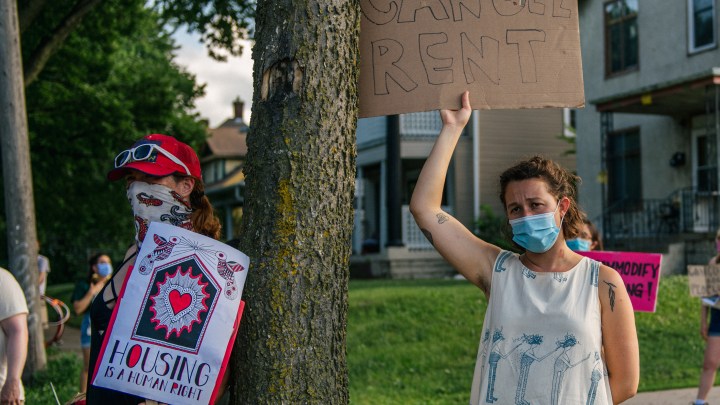
More relief is on the way for renters who’ve fallen behind
More relief is on the way for renters who’ve fallen behind

Some help is on the way for the estimated 14 million households that are behind on their rent. The COVID-19 relief package Congress is expected to pass would extend a national moratorium on evictions by a month, through the end of January 2021. The deal also includes $25 billion in emergency rental assistance to be doled out by state, local and tribal governments.
Getting that money to the people who need it, though, is a whole other challenge. According to the National Low Income Housing Coalition, at least $335 million in rental assistance funded by the original CARES Act could remain unspent by the end of the year — and not for lack of demand.
Tyler Walters, in Madison, Wisconsin, is the kind of person rental relief was supposed to help. He has chronic bronchitis and, as a restaurant server, hasn’t felt safe working more than a few shifts a week. He applied to a state program during the summer and got rejected. He applied again and was approved earlier this month.
“I was joking about how I wanted to frame the thing when they sent it to me,” he said. “This is life-changing.”
The program sent $2,500 directly to his landlord and covered 2½ months’ rent, bringing him current and putting a stop to the monthly eviction notices appearing on his door.
While some state and local programs got up and running quickly, others have been hung up by administrative delays, said Andrew Aurand, vice president for research at the National Low Income Housing Coalition.
“What these programs really needed was more time, and we were really fearful that time was going to run out,” he said.
Washington looks likely to extend the original Dec. 30 deadline to spend that money to the end of next year.
But in Pennsylvania, time has already run out because the state legislature imposed a Nov. 30 deadline. Many landlords there weren’t crazy about the program and didn’t apply until the state eased limits on how much rent they could collect from tenants who received assistance.
The change led to a last-minute surge in applications, said Bryce Maretzki, director of policy and planning at the Pennsylvania Housing Finance Agency.
“I think that last month showed what a successful program from the beginning would have looked like,” he said.
Still, the state only managed to give out $54 million of the $150 million set aside for rent relief, he said. According to Spotlight PA, any remaining funds will go to the state Department of Corrections.
Connecticut also had a slow start to its temporary rental assistance program. In late September, five months into the program, only two families had received aid, according to the Connecticut Mirror. Housing advocates say onerous documentation requirements and a shortage of staff to process applications delayed the rollout.
Many landlords also refused to participate in the program, said Erin Kemple, executive director of the Connecticut Fair Housing Center, because it capped assistance at $4,000 per tenant.
“Rents in Connecticut are pretty high,” she said. “So if you were unable to pay rent starting at the beginning of the pandemic because you were laid off from your job, certainly by October or November you probably owed more than $4,000.”
As of Monday, just $17 million of the $40 million available had been distributed, according to the Connecticut Department of Housing.
Housing advocates say programs should be better prepared to distribute the next round of funding from Congress. But with the national moratorium extended only through January, many renters will face eviction before the assistance reaches them.
“On my estimate, this is going to be enough resources to help keep 2 to 8 million households in their homes for at least several months,” said Douglas Rice, a senior fellow at the Center on Budget and Policy Priorities. “This really is a first step, in our view.”
There’s a lot happening in the world. Through it all, Marketplace is here for you.
You rely on Marketplace to break down the world’s events and tell you how it affects you in a fact-based, approachable way. We rely on your financial support to keep making that possible.
Your donation today powers the independent journalism that you rely on. For just $5/month, you can help sustain Marketplace so we can keep reporting on the things that matter to you.


















